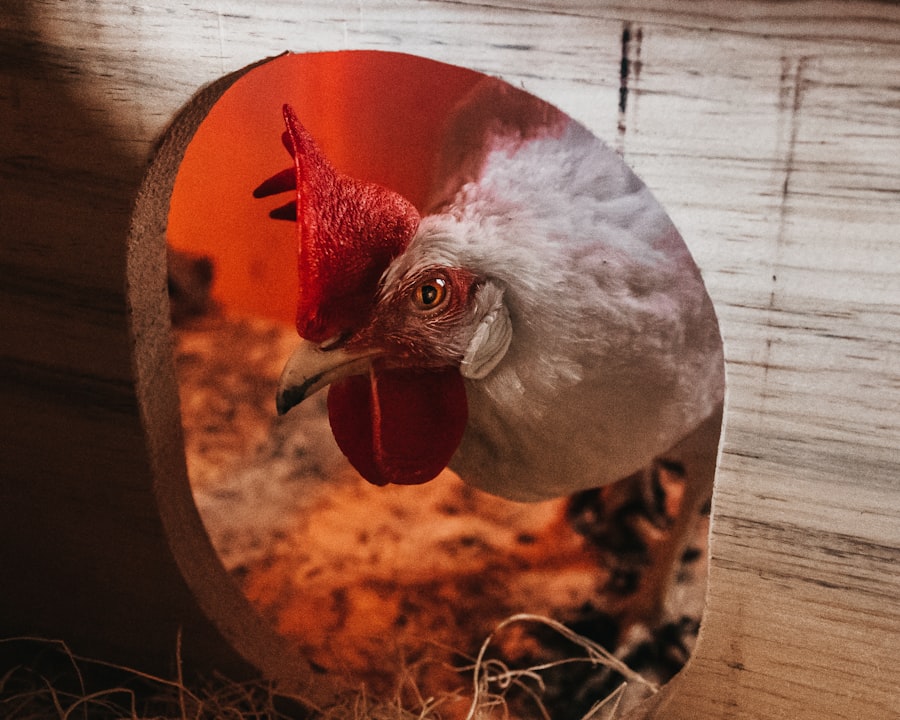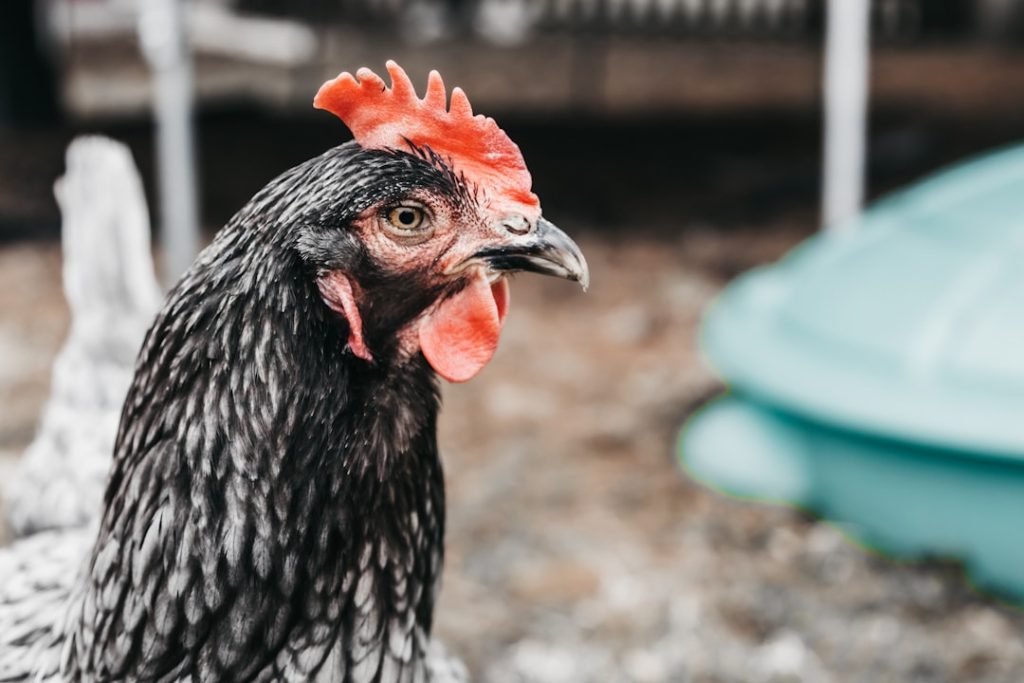When raising chickens, providing adequate space is essential for their health and well-being. Chickens require room to move, forage, and engage in natural behaviors like dust bathing and scratching. The space requirements for chickens vary based on factors such as breed, age, and purpose (egg production or meat).
Generally, chickens need a minimum of 2-3 square feet per bird inside the coop and 8-10 square feet of outdoor space per bird for free-ranging. Providing more than the minimum space requirements can result in healthier and happier chickens. Chickens confined to small spaces may experience stress, leading to aggressive behavior, feather picking, and decreased egg production.
Overcrowding also increases the risk of disease and parasite transmission within the flock. It is crucial to consider space requirements when planning and designing a coop and outdoor area for chickens. Understanding and meeting these space needs ensures that chickens have sufficient room to thrive and maintain good health.
Table of Contents
- 1 Factors to Consider When Determining Chicken Coop Size
- 2 The Ideal Outdoor Space for Free-Range Chickens
- 3 How Much Space Do Chickens Need for Roosting and Nesting?
- 4 Tips for Maximizing Space in a Small Chicken Coop
- 5 The Importance of Providing Adequate Space for Chicken Health and Well-being
- 6 Finding the Right Balance of Space for Your Chickens
- 7 FAQs
- 7.1 What is the recommended amount of space to keep chickens?
- 7.2 Why is it important to provide enough space for chickens?
- 7.3 What are the consequences of not providing enough space for chickens?
- 7.4 Are there specific space requirements for different breeds of chickens?
- 7.5 What are some tips for maximizing space for chickens in a small coop or run?
Key Takeaways
- Understanding the space requirements for chickens is crucial for their health and well-being.
- Factors to consider when determining chicken coop size include the number of chickens, breed, and intended use of the coop.
- Providing an ideal outdoor space for free-range chickens is important for their physical and mental stimulation.
- Chickens need adequate space for roosting and nesting to feel secure and comfortable.
- Tips for maximizing space in a small chicken coop include using vertical space and implementing efficient storage solutions.
- Providing adequate space for chickens is essential for their health, well-being, and overall productivity.
- Finding the right balance of space for your chickens is key to ensuring their happiness and overall quality of life.
Factors to Consider When Determining Chicken Coop Size
Determining Space per Bird
The first factor to consider is the number of chickens you plan to keep. Each chicken needs at least 2-3 square feet of space inside the coop. Therefore, it’s essential to calculate the total square footage needed based on the number of birds in your flock. Larger breeds or dual-purpose chickens may require more space per bird to accommodate their size.
Coop Design and Layout
A well-designed coop can maximize the use of space and provide ample room for chickens to move around, roost, and nest. It’s crucial to include features such as roosting bars, nesting boxes, and adequate ventilation to ensure the coop meets the needs of the flock.
Climate Considerations
The climate in your area is also an important factor when determining coop size. In colder climates, chickens may spend more time inside the coop, so providing extra space can help prevent overcrowding and reduce stress among the birds.
The Ideal Outdoor Space for Free-Range Chickens

For chicken owners who want to allow their birds to free-range, providing adequate outdoor space is essential for their well-being. Free-ranging allows chickens to engage in natural behaviors such as foraging for insects and plants, dust bathing, and exploring their environment. The ideal outdoor space for free-range chickens is at least 8-10 square feet per bird.
This allows them to roam freely and exhibit natural behaviors without feeling crowded or confined. In addition to providing enough space, it’s important to consider the safety of free-range chickens. Predators such as foxes, hawks, and raccoons pose a threat to free-ranging chickens, so it’s important to provide a secure outdoor area with fencing and predator-proofing measures.
Providing shade, shelter, and access to fresh water is also important for free-range chickens to thrive in their outdoor environment. By creating an ideal outdoor space for free-range chickens, you can ensure that they have the freedom to express natural behaviors while remaining safe and secure.
How Much Space Do Chickens Need for Roosting and Nesting?
In addition to space for movement and foraging, chickens also need adequate space for roosting and nesting inside the coop. Roosting bars should be provided at a height of 2-4 feet off the ground, with at least 8 inches of roosting space per bird. This allows chickens to perch comfortably at night and prevents overcrowding on the roosts.
Nesting boxes should also be provided at a ratio of one box for every 3-4 hens, with each box measuring around 12×12 inches in size. Providing enough space for roosting and nesting is important for chicken health and well-being. Overcrowding on roosts can lead to aggression and competition among birds, while inadequate nesting space can result in egg-laying issues and stress among hens.
By ensuring that there is enough space for roosting and nesting inside the coop, you can help create a comfortable and stress-free environment for your flock.
Tips for Maximizing Space in a Small Chicken Coop
If you have limited space for a chicken coop, there are several tips for maximizing the available space to ensure that your birds have enough room to live comfortably. One way to maximize space is by utilizing vertical space with multi-level roosting bars and nesting boxes. This allows you to make the most of the available square footage while providing enough room for chickens to roost and lay eggs.
Another tip is to use space-saving features such as fold-down nesting boxes and removable roosting bars. This allows you to create more space inside the coop during cleaning and maintenance while still providing adequate roosting and nesting space when needed. Additionally, using space-saving feeders and waterers can help free up floor space inside the coop, allowing more room for chickens to move around.
The Importance of Providing Adequate Space for Chicken Health and Well-being

The Importance of Space for Physical Health
By providing enough room for chickens to move around, engage in natural behaviors, and establish a pecking order without feeling crowded or confined, you can help create a harmonious and stress-free environment for your flock.
The Impact of Space on Mental Well-being
In addition to physical health, providing enough space is also important for the mental well-being of chickens. Chickens that are confined to small spaces can become bored and frustrated, leading to behavioral issues such as feather picking and aggression.
Promoting Happiness and Mental Stimulation
By allowing chickens enough room to roam, forage, and explore their environment, you can help promote mental stimulation and overall happiness among the flock.
Finding the Right Balance of Space for Your Chickens
In conclusion, understanding the space requirements for chickens is essential for creating a healthy and comfortable living environment for your flock. Factors such as coop size, outdoor space for free-ranging, roosting and nesting space, and maximizing space in a small coop all play a crucial role in ensuring that chickens have enough room to thrive. By finding the right balance of space based on the needs of your specific flock, you can help promote their health, well-being, and overall happiness as they live out their lives on your farm or homestead.
Whether you’re raising chickens for eggs or meat, providing adequate space is key to ensuring that they lead a happy and fulfilling life.
If you’re wondering how much space to keep chickens, you may want to check out the article on Producers Pride Sentinel Chicken Coop on PoultryWizard. This article provides valuable information on the space requirements for keeping chickens and the features of a suitable coop for them. It’s a great resource for anyone looking to ensure their chickens have enough space to thrive.
FAQs
What is the recommended amount of space to keep chickens?
The recommended amount of space to keep chickens is at least 2-3 square feet per bird inside the coop and 8-10 square feet per bird in an outdoor run.
Why is it important to provide enough space for chickens?
Providing enough space for chickens is important for their overall health and well-being. It helps prevent overcrowding, reduces stress, and minimizes the risk of aggressive behavior and disease transmission.
What are the consequences of not providing enough space for chickens?
Not providing enough space for chickens can lead to increased aggression, pecking, and cannibalism among the birds. It can also result in poor hygiene, higher stress levels, and decreased egg production.
Are there specific space requirements for different breeds of chickens?
While the general space requirements apply to most chicken breeds, some larger or more active breeds may benefit from additional space to roam and exercise.
What are some tips for maximizing space for chickens in a small coop or run?
To maximize space for chickens in a small coop or run, consider using vertical space with roosts and perches, providing ample ventilation, and utilizing movable fencing or portable coops to rotate grazing areas. Regularly cleaning and decluttering the coop can also help create a more spacious environment for the chickens.
Meet Walter, the feathered-friend fanatic of Florida! Nestled in the sunshine state, Walter struts through life with his feathered companions, clucking his way to happiness. With a coop that’s fancier than a five-star hotel, he’s the Don Juan of the chicken world. When he’s not teaching his hens to do the cha-cha, you’ll find him in a heated debate with his prized rooster, Sir Clucks-a-Lot. Walter’s poultry passion is no yolk; he’s the sunny-side-up guy you never knew you needed in your flock of friends!







